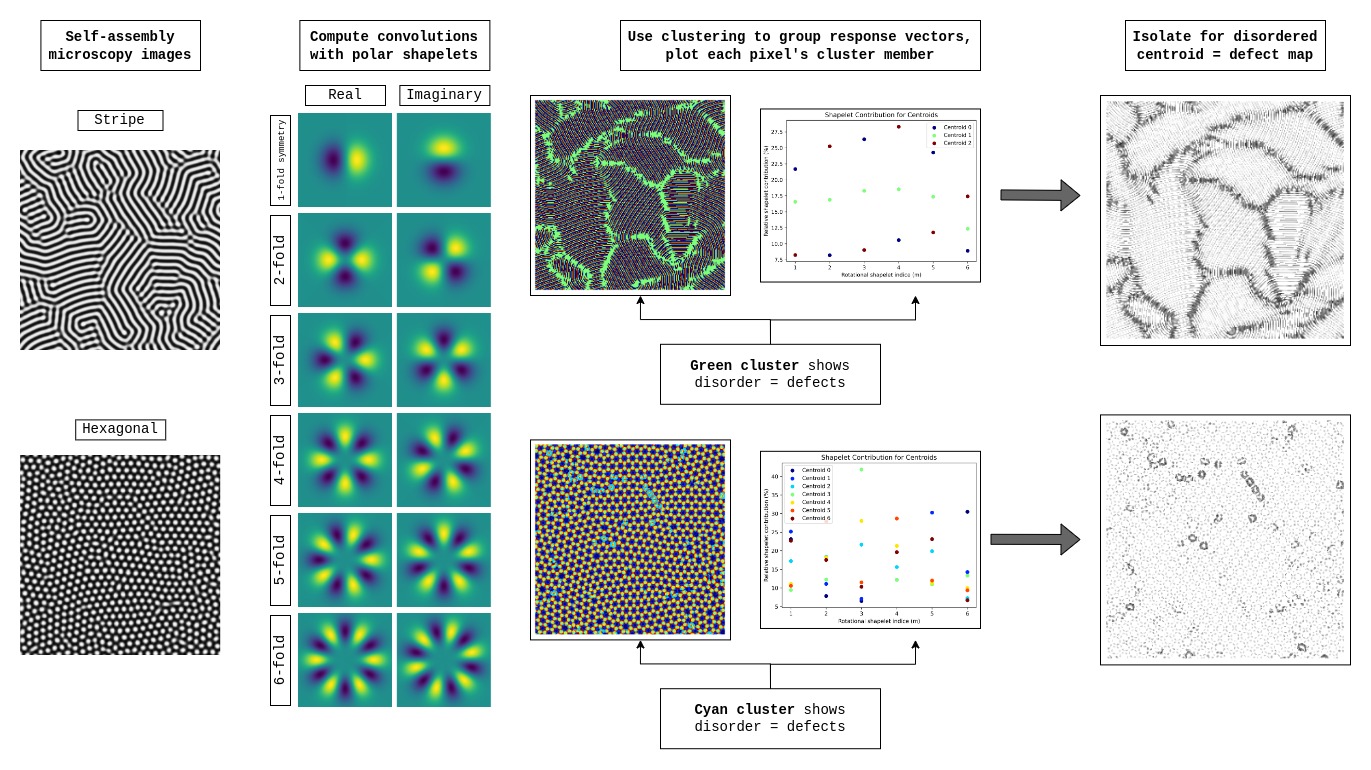Microscopy-based characterization techniques for nanomaterials are increasingly accurate and accessible to researchers. In order to determine structure/property relations, quantitative methods are needed to interpret microscopy images, and this is especially challenging for structured materials. For example, surface self-assembly processes produce microscopy images with complex spatially varying patterns that include large numbers of defects, both orientational and translational. Recent advancements in quantitative characterization of (nano)structured surfaces have enabled automated analysis of microscopy images. These methods include the use of local bond orientational order parameters and polar shapelets, focused on identification, classification, and quantification of local order. However, to date, there has been less focus on classification of defects in local order.
Defects in nanomaterials, including both translational (dislocations) and orientational (disclination) types, are topologically equivalent to those observed in crystalline phases. However, in soft materials the local structure of defects can vary substantially for equivalent topological charge. This is due to ordered phases in soft materials typically resulting from self-assembly of many constituent molecules, which allows for significant variation in local pattern length scale and the presence of local disorder within extreme pattern deformation.
Furthermore, the use of defects to manipulate and improve material performance has become increasingly recognized as an important aspect of material design, sometimes referred to as defect structure engineering. Therefore, the development of computational resources to both identify and classify these defects is imperative for quantification of local (nano)structure/property order.
In this work, a previously developed shapelet-based method for quantification of surface order is used to develop an unsupervised defect identification and classification method that is computationally more efficient than previous work. The previously developed shapelet-based method requires user input; specifically, the identification of a local pattern of interest within the target microscopy image. The presented method uses local pattern orientation with respect to a selected shapelet basis set in conjunction with a clustering scheme to automatically identify both translational and orientational defect structures without requiring information from the user; it also produces a defect identification output containing less noise and response variation compared to previous work. Identified defect structures are then classified based on shapelet response vectors, similar to the previously developed method, in order to classify them based on local pattern structure.
The defect identification and classification method is applied to a range of representative ordered surfaces resulting from self-assembly including stripe and hexagonal structures. Imaging from simulations and experimentation of surface self-assembly are analyzed using the presented method and compared to identification/classification conducted manually. The method is able to successfully identify and classify orientational and translational defects on a variety of structural patterns, depending on the resolution and noise present in the input microscopy image.


